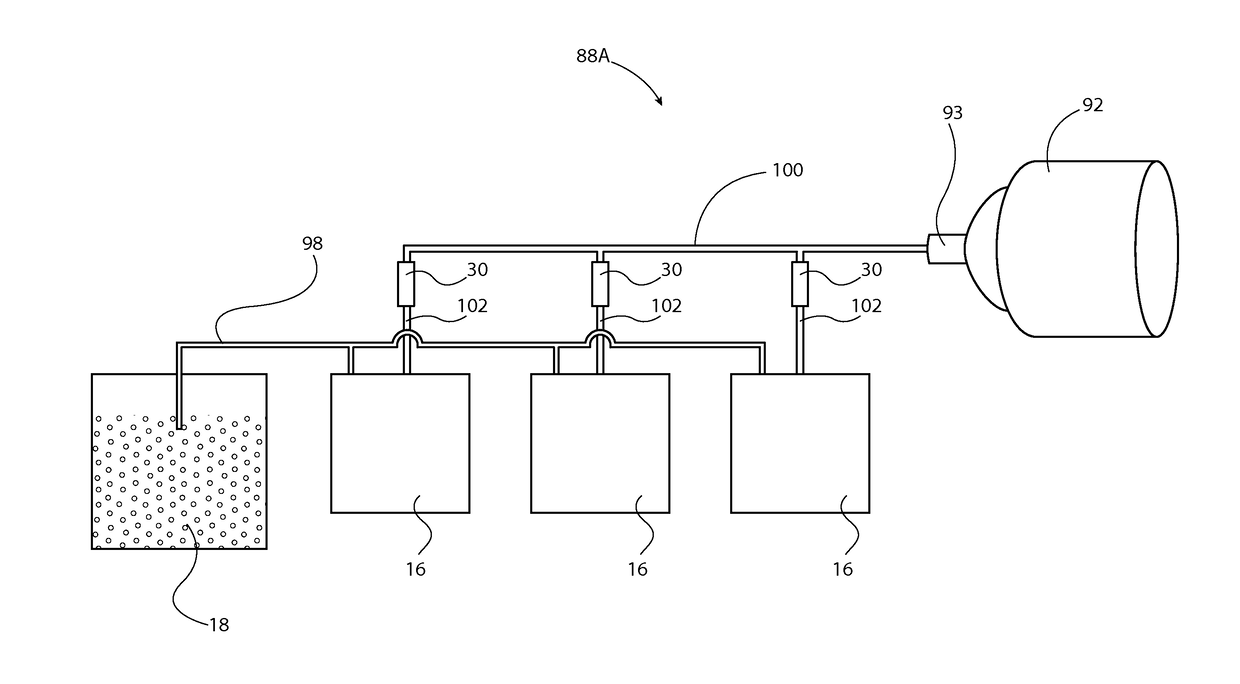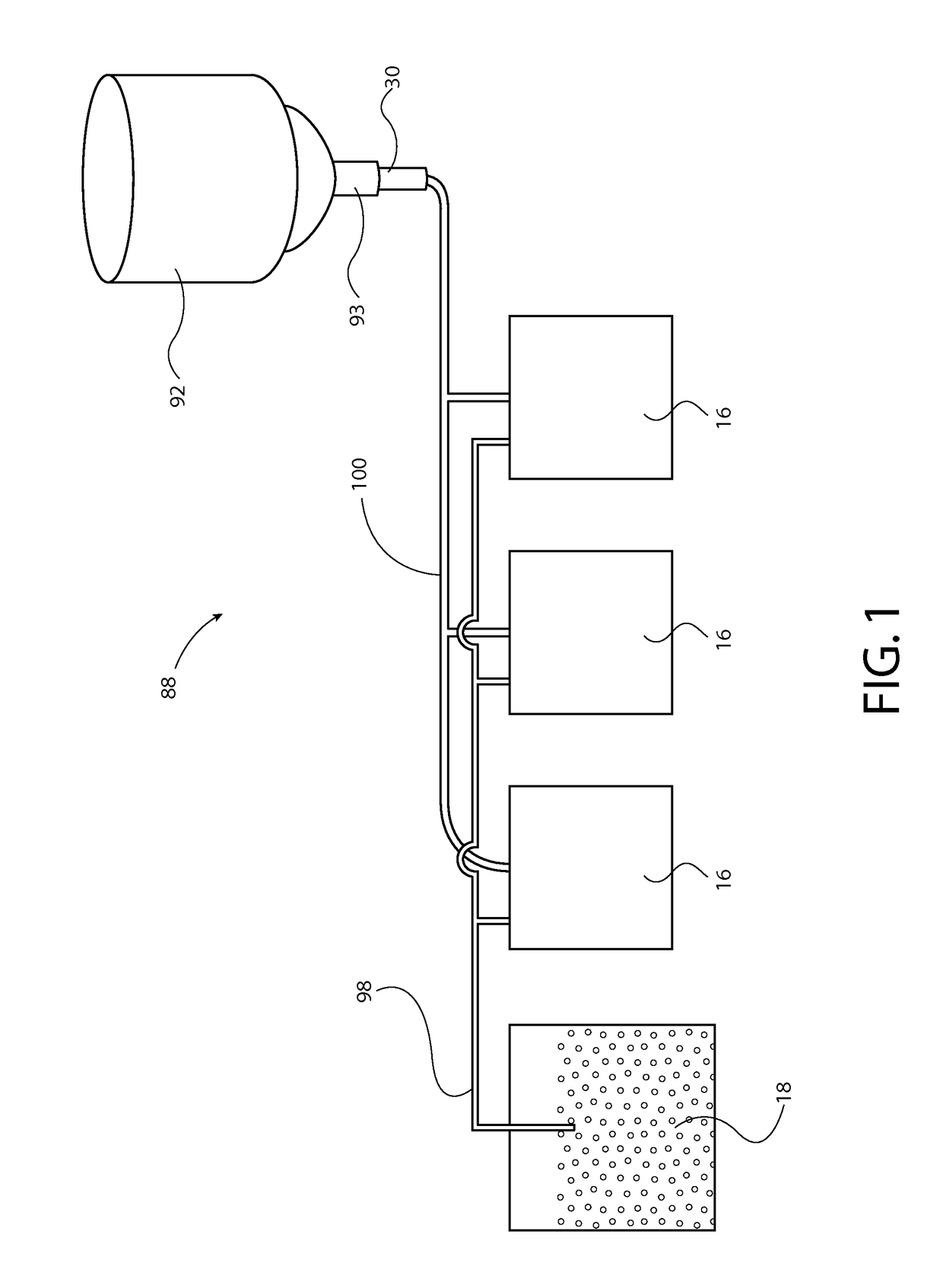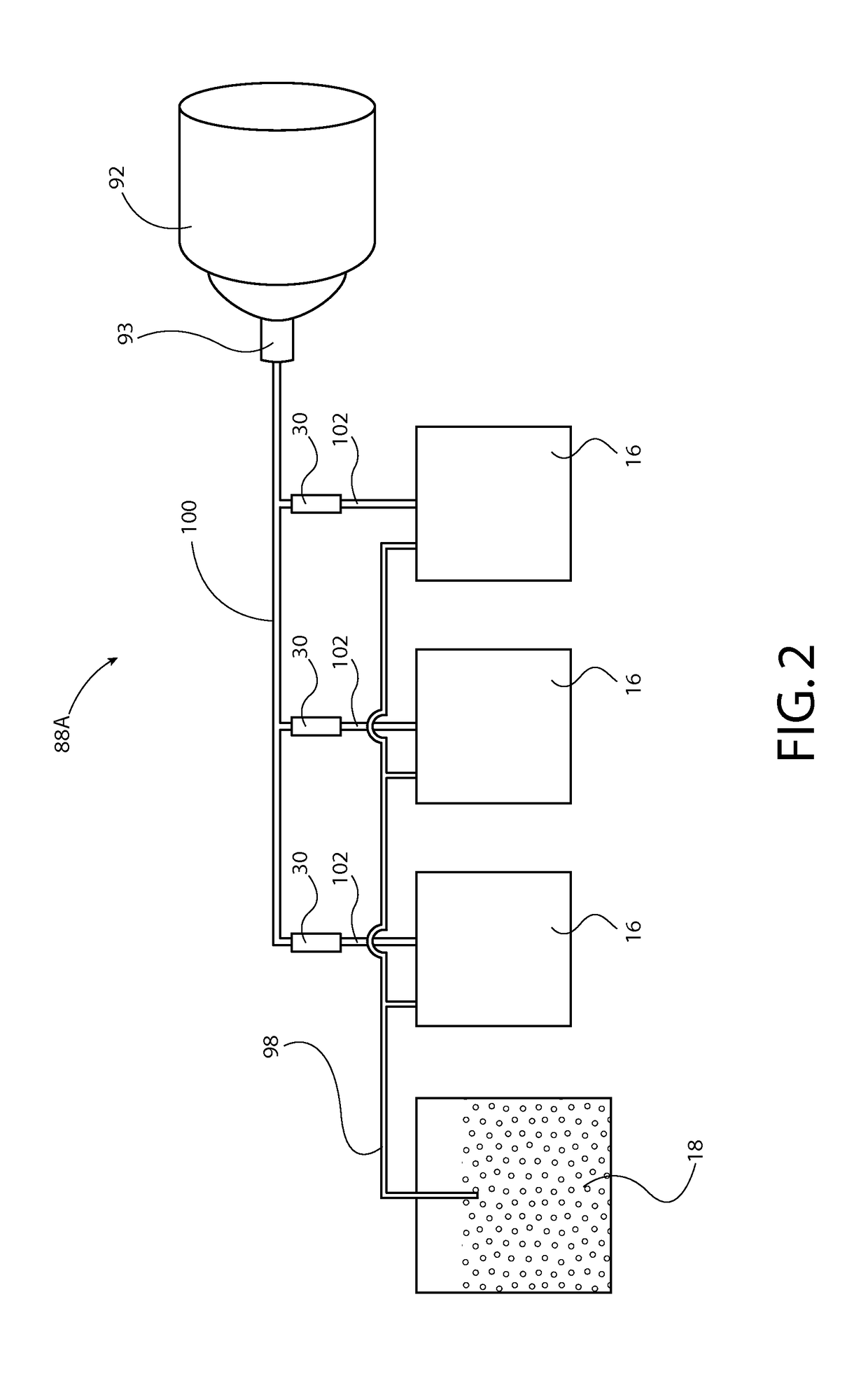Resin delivery system with air flow regulator
a pneumatic and air flow technology, applied in the field of plastic article manufacturing, can solve the problems of resin loading, excessive vacuum drop, material damage, etc., and achieve the effect of facilitating easy expansion of the pneumatic plastic resin pellet conveying system and reducing the cost of those systems
- Summary
- Abstract
- Description
- Claims
- Application Information
AI Technical Summary
Benefits of technology
Problems solved by technology
Method used
Image
Examples
Embodiment Construction
[0071]In this application, unless otherwise apparent from the context it is to be understood that the use of the term “vacuum” means “air at slightly below atmospheric pressure.” The vacuum (meaning air slightly below atmospheric pressure) provides a suction effect that is used to draw granular plastic resin material out of a supply and to convey that granular plastic resin material through various conduits to receivers where the granular resin material can be temporarily stored before being molded or extruded. Hence, in this application it is useful for the reader mentally to equate the term “vacuum” with the term “suction”.
[0072]Referring to the drawings in general and to FIG. 1 in particular, apparatus for conveying granular plastic resin material from the supply to receivers that retain and dispense the resin material when needed by a process machine is illustrated in FIG. 1. The apparatus, which is designated generally 88 in FIG. 1, preferably includes a vacuum pump designated ...
PUM
 Login to View More
Login to View More Abstract
Description
Claims
Application Information
 Login to View More
Login to View More - R&D
- Intellectual Property
- Life Sciences
- Materials
- Tech Scout
- Unparalleled Data Quality
- Higher Quality Content
- 60% Fewer Hallucinations
Browse by: Latest US Patents, China's latest patents, Technical Efficacy Thesaurus, Application Domain, Technology Topic, Popular Technical Reports.
© 2025 PatSnap. All rights reserved.Legal|Privacy policy|Modern Slavery Act Transparency Statement|Sitemap|About US| Contact US: help@patsnap.com



